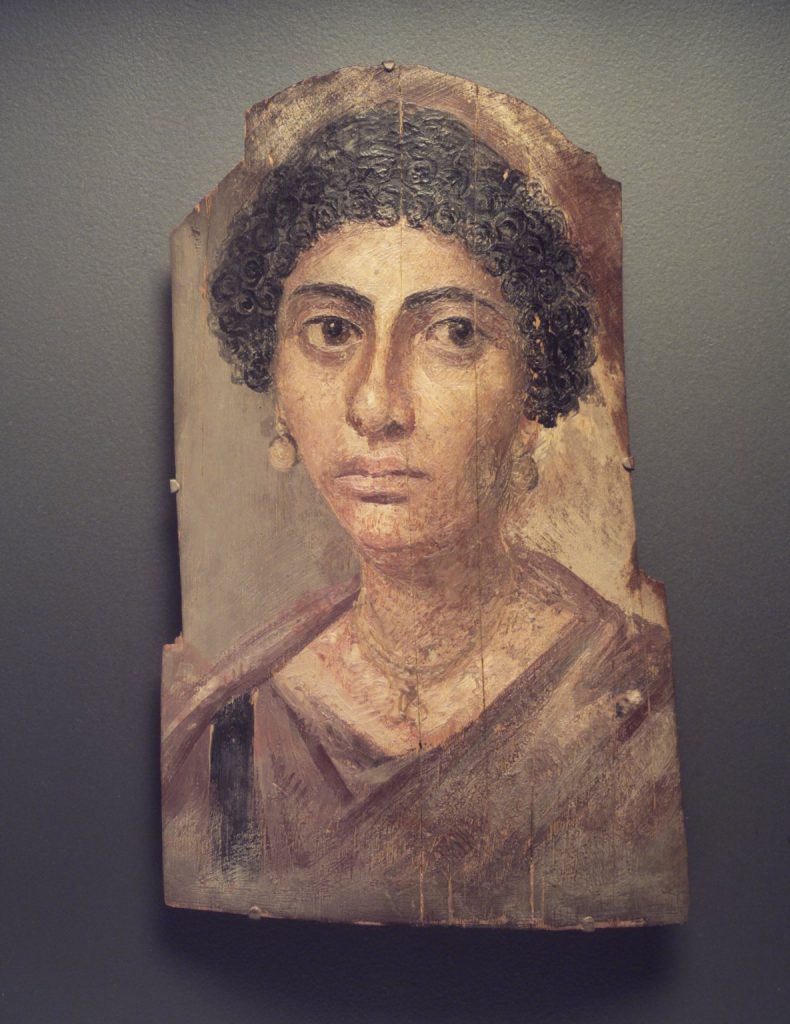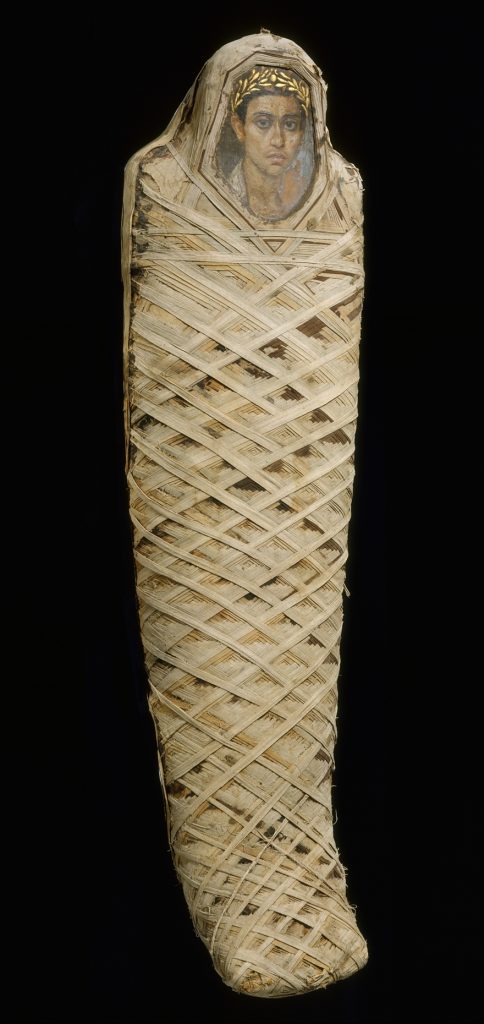Egyptian Funerary Portrait

Funerary Portrait of a Woman, 100-105 C.E. Encaustic on wood, 15 1/4 x 9 1/8 x 1/16 in. (38.8 x 23.2 x 0.2 cm). Brooklyn Museum, Bequest of Mrs. Carl L. Selden, 1996.146.9. Image courtesy of Brooklyn Museum, www.brooklynmuseum.org.

Mummy with an Inserted Panel Portrait of a Youth, A.D. 80–100. Encaustic on limewood, linen, human remains. Mummy: l. 169 cm (66 9/16 in); w. 45 cm (17 11/16 in). Panel as exposed: l. 38.1 cm (15 in); w. 18 cm (7 1/16 in). Metropolitan Museum of Art, Rogers Fund, 1911, 11.139. Image courtesy of Metropolitan Museum of Art, www.metmuseum.org.
Funerary art was practiced in Roman Egypt as a way to honor and adorn the dead and their tombs. Funerary portraits were placed on top of the casket. Depending on the wealth of the deceased, the materials used would vary. In the case of this particular portrait, the materials include gold, which indicates that this man had status and wealth.
